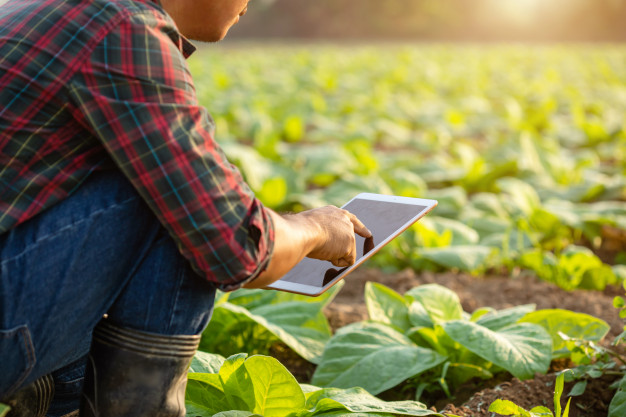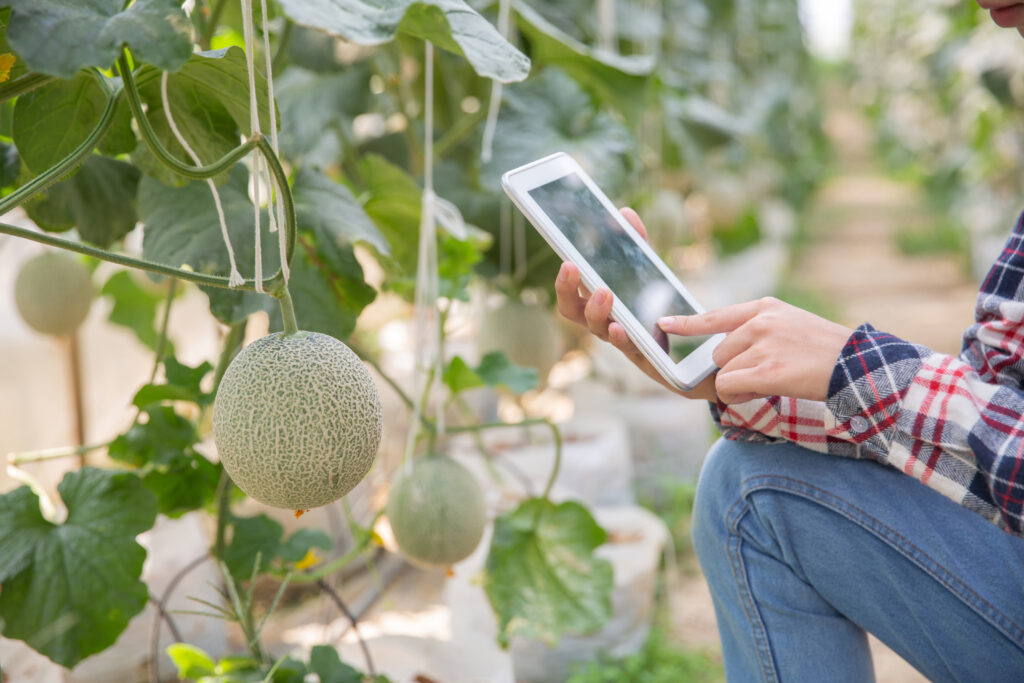
Smart farming has been a widely discussed topic among agricultural businesses for the last decade or so. And that’s no surprise: as the world becomes more populated, the demand for food grows rapidly. Farmers are searching for ways to increase the efficiency of their efforts, reduce the environmental impact and automate labor-intensive work in the field. In this context, new technologies play a fundamental role, offering solutions to many challenges faced by the industry.
In this article, we’ll describe what smart agriculture looks like today and what farming businesses can expect soon.
Smart agriculture: general overview
Today, implementing innovation in agriculture goes far beyond purchasing new machinery with enhanced capabilities. Such technologies as IoT, AI and GPS allow farmers and agronomists to produce food in a much smarter way. As a result, the adoption level of agritech solutions is rising, and this trend changes the industry standards all over the globe.
For instance, the worldwide market for agricultural robots (or agribots) was valued at $4.1 billion in 2018 and is forecast to reach $10.1 billion by 2024. Additionally, the agricultural sector was ranked third (17%) among the largest business areas for commercial drone use in the US. Only real estate photography and industrial inspections have bigger shares (48% and 28%, respectively). But perhaps the most critical indicator is the expected market size of IoT in the farming industry. It is projected to grow to $30 billion in the next three years.
Smart solutions for agro-businesses
New technologies open doors to endless possibilities for farmers and companies operating in the agricultural market. Here are the most popular state-of-the-art smart solutions that are revolutionizing conventional farming.
Plant sensors
The amount and quality of crop yields have always depended on numerous factors farmers could hardly measure or control. But IoT technology is changing everything. Smart sensors placed in the fields can monitor the temperature, humidity, pest stress and other important indicators that impact the health of a plant.
At the same time, a server-side IoT platform can analyze this information, helping farmers accurately calculate the amount of fertilizer they need and take some preventive measures if necessary. On top of that, crop monitoring systems powered by artificial intelligence allow for predictive analytics that give farmers an opportunity to make data-driven decisions.

Animal monitoring
IoT monitoring devices for cattle come in different formats, like microchip implants, collars, ear tags and so on. Besides having tracking capabilities, such devices can measure the animal’s body temperature, send signals to a veterinarian if something is wrong and notify farmers when the cow or sheep is ovulating.
As a result, farmworkers can easily find lost cattle, remove a sick animal from the herd in time and increase the livestock birth rate. All these factors can mitigate major risks associated with raising cattle and significantly increase the farm’s profits.
Smart drones
Smart drones have many applications in modern agriculture. For example, they can gather information about field geography, soils and growing crops across large areas with a minimum level of human intervention. In addition, farmers may use smart drones to spray fields more efficiently: they are more precise than tractors and work up to five times faster.
Lastly, smart drones are great tools for the general monitoring of crop fields and livestock. Fitted with cameras or near-infrared light sensors, they can detect critical changes in crops and any problems with herds (e.g. an injured animal).
>Farm of the future
Although IoT, along with other disruptive technologies, has transformed traditional farming, the future holds even more advancements. Today, most agricultural businesses are digitized only partially, meaning that farmers use smart devices to automate some separate tasks. The farm of the future is expected to be quite different.
The 5G network will offer a more reliable connection, higher Internet speeds and ultra-low latency. As a result, farmers will be able to implement numerous IoT and AI-enabled solutions and make their farms operate like one hyper-connected system.
The advent of 5G will bring not only the much faster Internet but also its ubiquitous coverage. This means that even the farms located in remote areas will have an opportunity to use smart solutions to the fullest.
Conclusion
If a farming business wants to stay relevant and competitive, it has to become more intelligent. That’s why investing in smart devices is no longer optional for companies in the agricultural sector. IoT-based solutions may improve the farm’s profit, cut costs, increase the amount of produce and significantly reduce the environmental impact. It’s also high time for startups looking to enter the agriculture industry to turn their ideas into reality
